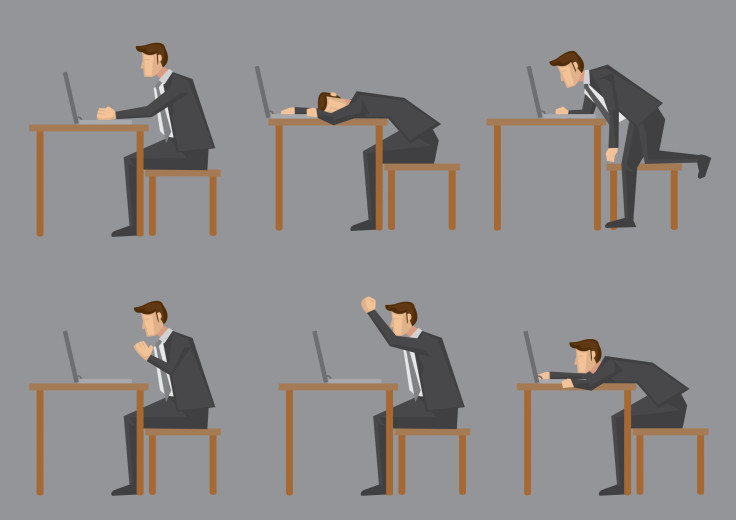Stand Up To Your Office Work: 6 Ways To Improve Health At Your Desk Job

Human beings have become a species of sitters, from their car or subway seat, to their desk and back home again to retreat to the couch — sitting accounts for at least 60 percent of people’s waking hours. A panel of international experts from Public Health England recently teamed up with UK community interest company Active Working CIC to stop the sedentary lifestyle by publishing new recommendations in the British Journal of Sports Medicine for the everyday ball-and-chain desk job.
Prolonged periods spent sitting and being physically inactive heightens the risk of serious illness and premature death, making it one of the greatest burdens of the working man. The panel concludes you spend anywhere from 65 to 75 percent of your workday sitting, and half of the time you don't even get out of your chair. For the average 9 to 5 office worker, that means you’re sitting for about three hours straight in the same bent position.
Previous research indicates these aren’t new findings, but rather a worsening problem that’s been gaining momentum over the years. Compared to past generations, humans are spending more and more time in environments that allow limited physical activity and require prolonged sitting, according to a 2010 study. In 1970, two in every 10 working Americans had desk jobs. Fast forward more than 30 years to 2003, and nearly six in every 10 workers sit on a computer at work, and more than nine in 10 children use computers at school.
"The evidence is clearly emerging that a first 'behavioral' step could be simply to get people standing and moving more frequently as part of their working day," the study’s authors wrote. "While longer term intervention studies are required, the level of consistent evidence accumulated to date, and the public health context of rising chronic diseases, suggest initial guidelines are justified."
Companies have already complied with recommendations by investing both time and money into building a healthier work environment for their staff. Evaluating the staff for their personal input is one of the best ways to achieve long-term goals, the panel suggested. Workers could vote on an optimal time to take standing breaks or walking meetings, and employees can look into purchasing standing desks for their employees. Desk job workers can take responsibility for their own health by purchasing an ergonomic exercise ball chair, a standing desk, or using a lacrosse or tennis ball to roll out the muscles in the arch of their feet.
Guidelines to Improve Workers' Health:
- Accumulate two hours of standing and light walking throughout your workday.
- Accumulate four hours of standing and light walking for people who predominantly spend time at their desk.
- Break up your workday with a standing or adjustable desk to shift posture and engage different muscle groups.
- Standing desks are great, but avoid standing for hours on end. It may be as harmful as prolonged sitting.
- Alternate walking posture to alleviate muscle and joint aches and pains. For example, make sure you’re not slumped our slouched.
- Hold health meetings with the staff and incorporate warning them of the potential dangers of prolonged sitting at work and home.
Source: British Journal of Sports Medicine. 2015.
Published by Medicaldaily.com



























